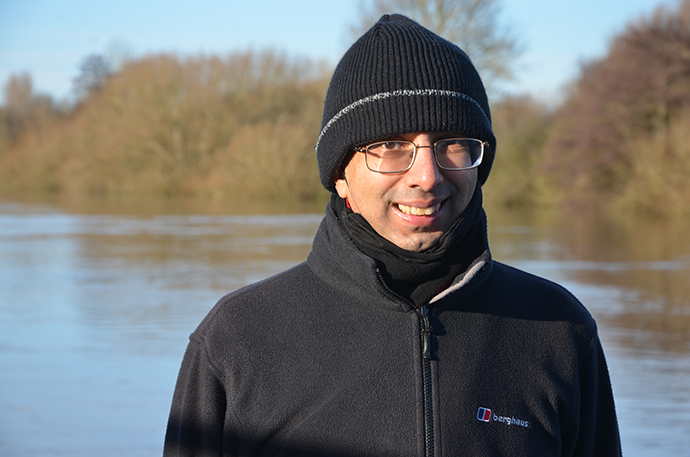
After spending nearly 20 years as a professor at the University of Miami, and having focused on administration and teaching instead of writing research code during the 2010s, it was time to redress the balance by taking a sabbatical year. Since my early career was built on collaboratively using ECMWF ensemble data (for aircraft mission planning, targeted observations, probabilistic prediction, verification, predictability), my choice of institution was ECMWF. My research is in tropical cyclones, which aligns with ECMWF’s interest in evaluating its forecasts of these destructive storms. Several other agencies worldwide have invested in improving tropical cyclone prediction, and their track forecasts have caught up with ECMWF. These agencies have also prioritised genesis and intensity prediction, two areas of interest for me. For my future research and for use at ECMWF, I proposed to develop a ‘toolbox’ to diagnose these predictions. A sabbatical plan between June 2020 and July 2021 was accordingly developed and approved.
Diagnosing tropical cyclones
As COVID-19 turned the world upside-down in 2020, I adopted a sofa in a flat in central Reading as my new office. I used the adversity to quietly write volumes of Python code. This was first used to diagnose ECMWF’s tropical cyclone forecasts and their errors in real-time, and to provide graphics to support a field campaign during the active Atlantic hurricane season. Everyone whom I met online was welcoming, especially the Diagnostics team during its thriceweekly meetings. Not much more could have been done to foster collaborative discussions. However, being entirely online did reduce my learning efficiency, and it was challenging to immerse deeply within ECMWF, including the more subtle and organic aspects of its successful culture. I did observe with admiration how ECMWF pivoted into the new virtual world, including frequent communications across staff and management. Coupled with supervising students and new strategic planning duties at my university, the long days on my laptop were tiring but productive.

In 2021, a new Special Topic paper on tropical cyclones for the Scientific Advisory Committee (SAC) provided a target. I enjoyed diagnosing a suite of coordinated modelling and assimilation experiments for an active period during 2020, and it provided the opportunity to meet with additional experts at ECMWF. Led by Linus Magnusson, a paper has just been completed. This study provided several scientific outcomes. For genesis, the results were mixed. When a precursor disturbance is robust and isolated, the predictability and probabilistic skill of genesis is relatively high. However, genesis often occurs from initially smallscale, convectively disorganized waves, or waves that are interacting. Ensemble forecasts usually underpredict the probability of these genesis events. For tropical cyclone motion, in addition to a known slow bias, the largest errors usually arise in cases when the tropical cyclone is gaining latitude. Forecasts of both the position and intensity are also dependent on the initial motion, structure, and intensity of the tropical cyclone. Part of my toolbox depicts the three-dimensional anatomy of a tropical cyclone, in a cylindrical polar coordinate framework. It was especially pleasing to see realistic eyewall and rainband structures of intense hurricanes when the grid spacing was reduced to 4 km. Investigations of the structures also yielded insights on how the assimilation of selected observational datasets influenced analyses and forecasts. Since genesis and intensity change can be dominated by processes in the order of 1–10 km, limitations in the resolution of the data assimilation led to compromised representations of the physical processes. At the end of our paper, we make several recommendations. We are also planning to submit manuscripts for peer review.
What next?
Tropical cyclone forecasting will continue to provide challenges on all timescales, and will serve as ‘stress tests’ for versions of ECMWF’s Integrated Forecasting System (IFS) under development. I look forward to continued collaborations with ECMWF to diagnose their forecast errors and uncertainties, to help keep advancing predictive skill. Another interest is to expand to wind and rainfall structure, and their impacts. Finally, I would like to thank my primary collaborator and friend Linus Magnusson, David Richardson and ECMWF management for supporting the visit, the University of Miami for granting the sabbatical leave, and the US National Science Foundation and Office of Naval Research.

